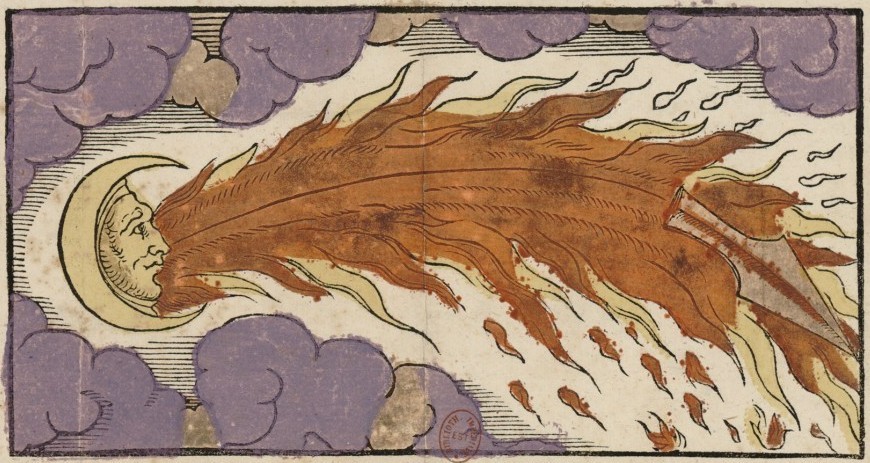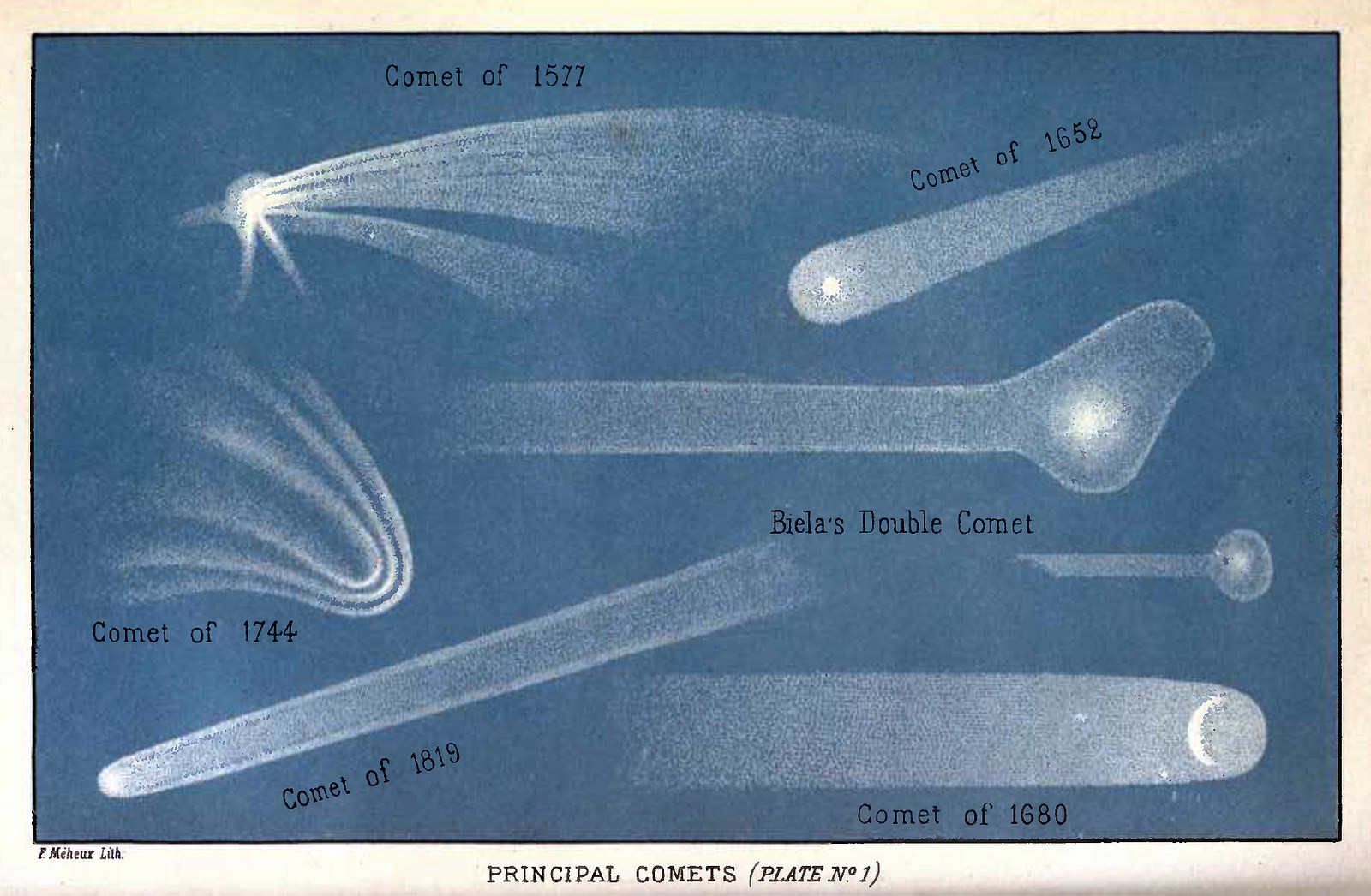Since January 1, 1995, the International Astronomical Union refers to comets as follows :
- A prefix, C/ for new comets or comets with periods greater than 200 years, P/ for shorter-period comets, and more rarely X/ for those whose orbit could not be determined and D/ for disappeared comets;
- The year of discovery, followed by a capital letter identifying the half-month of the discovery and a number giving the order of discovery in that half month;
- Optionally, the name of one or (at most) two discoverers can be added to respect the tradition, possibly with a serial number if the person or persons had previously discovered other comets. As many comets are now discovered by observation with a robotic telescope, an artificial satellite or a space probe, the name of the instrument is added in this case (e.g. LINEAR or SOHO).
Thus the second comet discovered in the second half of January 1996, a long-period comet, is designated C/1996 B2 Hyakutake.

Vue d'un phénomène céleste ressemblant à une comète qui a apparu à Salon en Provence - Gedruckt zu Nurmberg bey M. Joachim Heller, 16e siècle.
Source : Gallica.bnf.fr / Bibliothèque Nationale de FranceAnd that is not all! For periodic comets that have been observed at several returns, a sequential number is added to the P/ prefix, which indicates the order in which they were discovered or identified, forgetting the rest of the schedule. The name of the discoverer is generally added in such cases. There were in 2015 325 comets in this class: 1P/Halley, 2P/Encke, 3D/Biela (an extinct comet), 4P/Faye … 325P/Yang Gao.
For example, here is how the comet that crashed into Jupiter in July 1994 was named: 1993e and 1994 X, then D/1993 F2 Shoemaker-Levy 9.

Principal comets, Plate 1, tiré de Astronomy / Jean Rambosson - 1875.
Source : Internet Archive Book Images